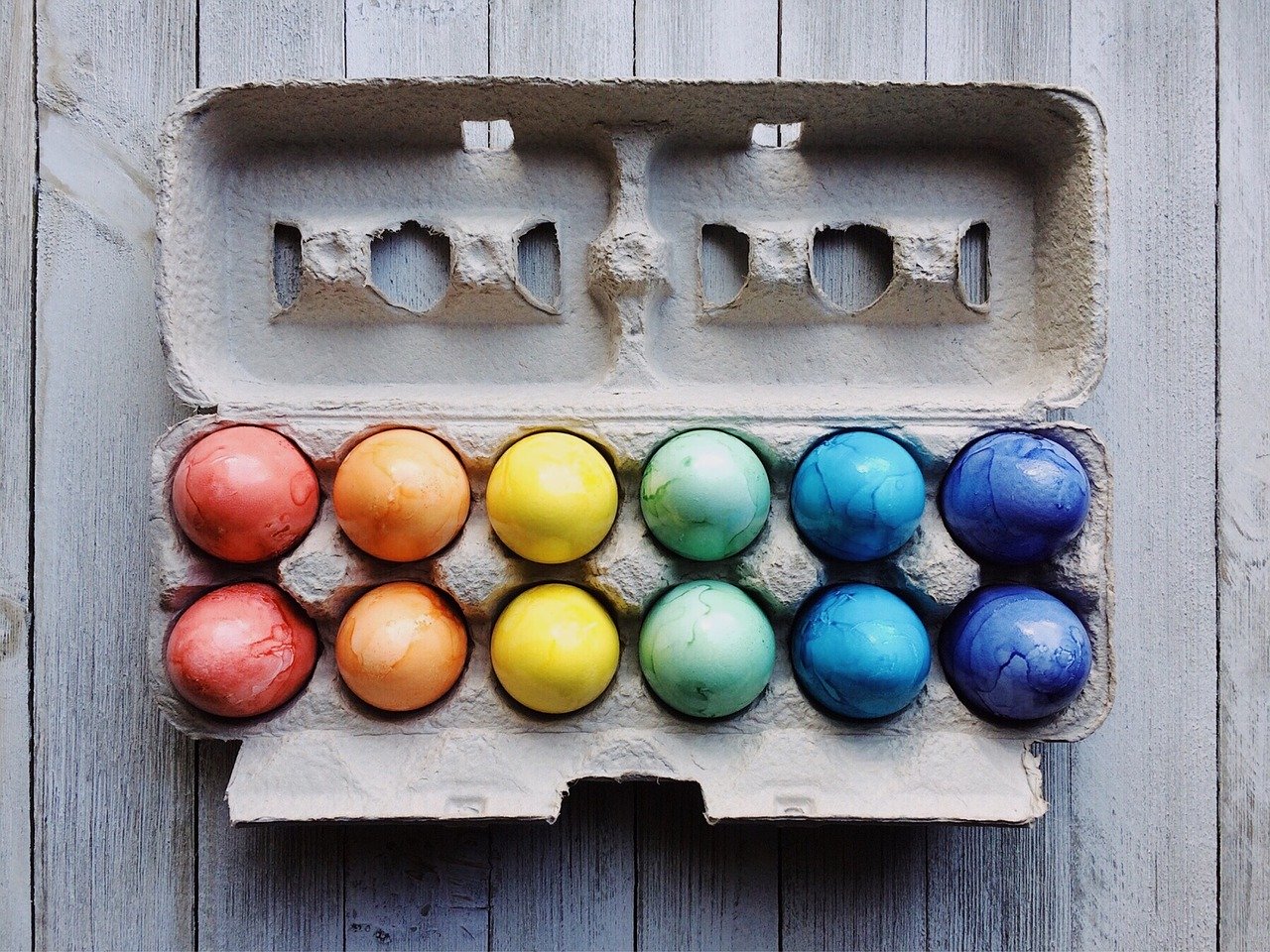Adaptive Easter Activities
by Anna Cardosa Gray, DPT &
Amanda Mazerall, OTR/L
The holidays provide wonderful opportunities to teach children old traditions and new skills; Easter is no different! Whether it is via a classic Easter egg hunt, crafting, decorating, or with worksheets, children of all abilities can participate in the festivities with a few modifications…
Easter Egg Decorating Modifications:
- Use a muffin tin or egg carton to place and hold egg in place while your child paints each top. They could use a paint brush or a sponge to dab on the colors. A spray or squirt bottle filled with food safe dye mixture could also be used.
- Put drops of food safe dye in a pan or plastic bag and have your child roll the egg around by tilting the container; this will also work on bilateral coordination.
- If paint is not your preferred form of crafting, have your child use stamps, stickers, or markers to color the eggs.
Easter Egg Hunt Variations:
- If your child lacks the gross motor skills required to retrieve hard to reach eggs, try placing them in more obvious, easy to reach areas. You could use ribbons to tie a small knot around the egg and hang from door frames, tape eggs to stick to walls, or place on top of bushes/chairs. You could also add the component of a reacher/grabber for your child to retrieve eggs from a greater distance.
- For children who have difficulty picking up or holding an egg, you can use the small Velcro dots with the sticky backs. Put several “scratchy side” dots on each egg for your child. Then place a mitten on the hand your child will use. You may consider cutting the fingers off an old mitten so they can still feel with their finger tips, but the Velcro will help “stick” to the palm of the child’s mitten.
- If your child has vision impairment, consider making or buying noise making eggs. org has a great buyer’s guide for adaptive eggs. Additionally, the Foundation for Blind Children has an annual Spring Festival at their Central Phoenix campus that your family could attend. Please call ahead for details and to register.
- For children that are fully mobile but are having a hard time visually scanning their environment, provide verbal cues to help them locate the eggs while also learning new vocabulary. Using prepositional phrases such as ‘on top’, ‘under’, ‘next to’, ‘under’, and ‘behind’ may help your child understand spatial relationships better.
Egg Games to play after the hunt:
- Try a variation of the Marco Polo game: Everyone closes their eyes (or blindfolds) and tries to locate the Easter Bunny who is holding the Egg basket. Instead of calling “Marco Polo”, the hunters call “Easter” and the person who is “it” calls out “bunny”. This is a good functional activity for sound location and can be played with a buddy for children who have mobility challenges.
- Buddy Egg Race or Obstacle Course modification: It’s often fun to do race with the egg in a spoon, or hat, but if your child has mobility challenges they may need modifications to participate successfully. They may have success using a larger spoon, or everyone could participate by doing the game with a buddy where two people have to hold the egg and move through the course.
- Try some Easter Egg Bowling by setting up some empty water bottles (or stuffed bunnies!) and rolling the eggs toward them from a short distance. Remember that eggs will not roll symmetrically.
- Have your child help put the discovered eggs back together to use for the next year. If the eggs are all different colors, have your child locate the correct matches and work on bilateral coordination skills to assemble each egg.
- Easter themed ‘spot the difference’ work sheet. This will work on visual discrimination and figure ground skills.
- Easter coloring pages. You can have them color images of their preference or have them complete a ‘color by numbers’ hand out.
- Easter word searches.








